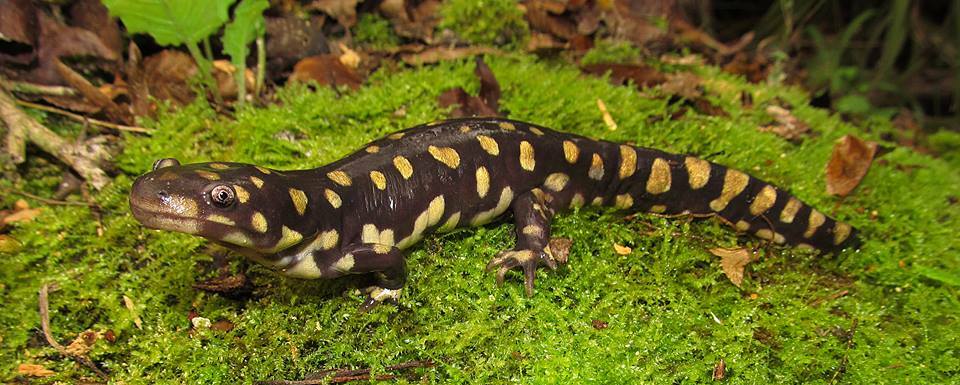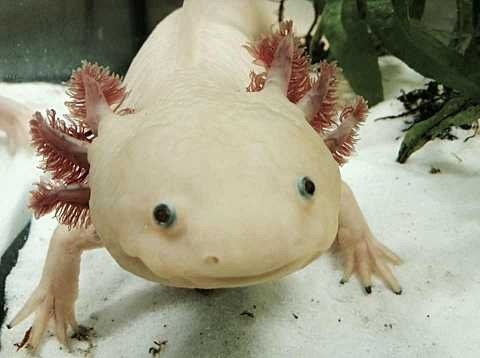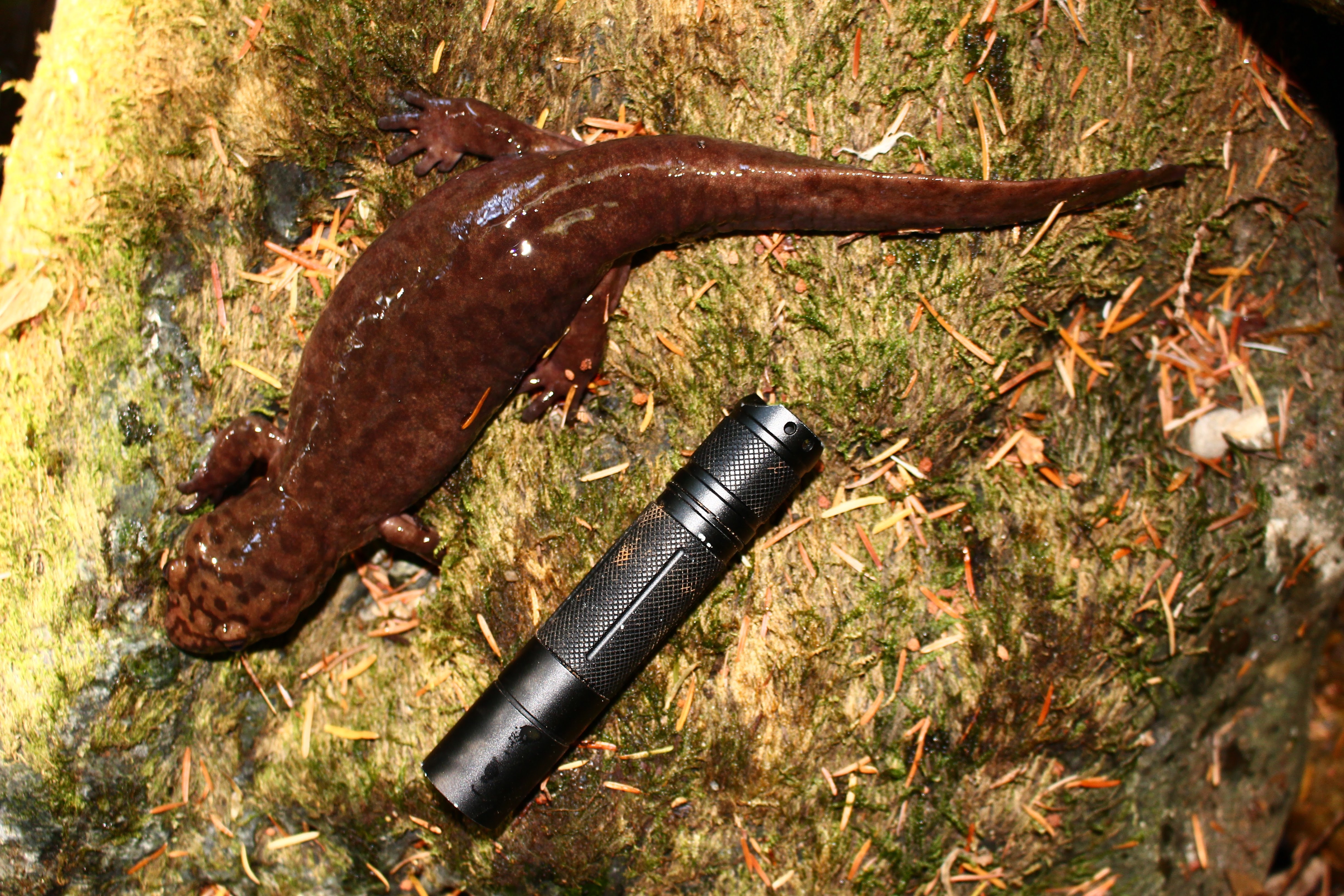|
Ambystomatidae
Ambystomatidae is a family of salamanders belonging to the order Caudata in the class Amphibia. It contains two genera, ''Ambystoma'' (the mole salamanders) and ''Dicamptodon'' (the Pacific giant salamanders). ''Ambystoma'' contains 32 species and are distributed widely across North America, while ''Dicamptodon'' contains four species restricted to the Pacific Northwest. These salamanders are mostly terrestrial and eat invertebrates, although some species are known to eat smaller salamanders. They can be found throughout the US and some areas of Canada in damp forests or plains. This family contains some of the largest terrestrial salamanders in the world, the tiger salamander and the coastal giant salamander. Some species are toxic and can secrete poison from their bodies as protection against predators or infraspecific competition. Neoteny has been observed in several species in Ambystomatidae, and some of them like the axolotl live all of their lives under water in their ... [...More Info...] [...Related Items...] OR: [Wikipedia] [Google] [Baidu] |
Tiger Salamander
The tiger salamander (''Ambystoma tigrinum'') is a species of mole salamander and one of the largest terrestrial salamanders in North America. Description These salamanders usually grow to a length of with a lifespan of around 12–15 years. They are characterized by having markings varying in color on the back of their head, body, and tail. The coloring of these spots range from brownish yellow to greenish yellow, while the rest of their back is black or dark brown. They have short snouts, thick necks, strong legs, and lengthy tails. Their diet consists largely of small insects, snails, slugs, frogs, and worms, although it is not rare for an adult to turn cannibalistic and consume its own kind. Cannibalism in these salamanders can almost always be traced back to a large volume of competing predators and lack of prey in the area. If the opportunity presents itself, tiger salamanders will even feed on other smaller salamander species, lizards, snakelets (baby snakes), and newb ... [...More Info...] [...Related Items...] OR: [Wikipedia] [Google] [Baidu] |
Mole Salamander
The mole salamanders (genus ''Ambystoma'') are a group of advanced salamanders endemic to North America. The group has become famous due to the presence of the axolotl (''A. mexicanum''), widely used in research due to its paedomorphosis, and the tiger salamander (''A. tigrinum, A. mavortium'') which is the official amphibian of many states, and often sold as a pet. General description Terrestrial mole salamanders are identified by having wide, protruding eyes, prominent costal grooves, and thick arms. Most have vivid patterning on dark backgrounds, with marks ranging from deep blue spots to large yellow bars depending on the species. Terrestrial adults spend most of their lives underground in burrows, either of their own making or abandoned by other animals. Some northern species may hibernate in these burrows throughout the winter. They live alone and feed on any available invertebrate. Adults spend little time in the water, only returning to the ponds of their birth to br ... [...More Info...] [...Related Items...] OR: [Wikipedia] [Google] [Baidu] |
Cladistics
Cladistics (; ) is an approach to biological classification in which organisms are categorized in groups (" clades") based on hypotheses of most recent common ancestry. The evidence for hypothesized relationships is typically shared derived characteristics ( synapomorphies'')'' that are not present in more distant groups and ancestors. However, from an empirical perspective, common ancestors are inferences based on a cladistic hypothesis of relationships of taxa whose character states can be observed. Theoretically, a last common ancestor and all its descendants constitute a (minimal) clade. Importantly, all descendants stay in their overarching ancestral clade. For example, if the terms ''worms'' or ''fishes'' were used within a ''strict'' cladistic framework, these terms would include humans. Many of these terms are normally used paraphyletically, outside of cladistics, e.g. as a ' grade', which are fruitless to precisely delineate, especially when including extinct species. ... [...More Info...] [...Related Items...] OR: [Wikipedia] [Google] [Baidu] |
American Museum Of Natural History
The American Museum of Natural History (abbreviated as AMNH) is a natural history museum on the Upper West Side of Manhattan in New York City. In Theodore Roosevelt Park, across the street from Central Park, the museum complex comprises 26 interconnected buildings housing 45 permanent exhibition halls, in addition to a planetarium and a library. The museum collections contain over 34 million specimens of plants, animals, fossils, minerals, rocks, meteorites, human remains, and human cultural artifacts, as well as specialized collections for frozen tissue and genomic and astrophysical data, of which only a small fraction can be displayed at any given time. The museum occupies more than . AMNH has a full-time scientific staff of 225, sponsors over 120 special field expeditions each year, and averages about five million visits annually. The AMNH is a private 501(c)(3) organization. Its mission statement is: "To discover, interpret, and disseminate—through scientific research ... [...More Info...] [...Related Items...] OR: [Wikipedia] [Google] [Baidu] |
Rhyacotritonidae
The torrent salamanders or Cascade salamanders are a family of salamanders (Rhyacotritonidae) with only one genus, ''Rhyacotriton''. The torrent salamanders are endemic to the United States in the Pacific Northwest (including northwestern California). Species The genus ''Rhyacotriton'' includes four species: *Cascade torrent salamander (''R. cascadae'') *Columbia torrent salamander (''R. kezeri'') *Olympic torrent salamander (''R. olympicus'') *Southern torrent salamander (''R. variegatus'') Taxonomy Originally the genus ''Rhyacotriton'' was placed in the family Ambystomatidae, later in the family Dicamptodontidae The Pacific giant salamanders (frequently stylized as Giant Pacific Salamanders or GPS) are members of the genus ''Dicamptodon''. They are large salamanders endemic to the Pacific Northwest in North America. They are included in the family Ambys ..., and finally in 1992 it was placed into a family of its own. At the same time the only species ''Rhyacotriton olympi ... [...More Info...] [...Related Items...] OR: [Wikipedia] [Google] [Baidu] |
Axolotl
The axolotl (; from nci, āxōlōtl ), ''Ambystoma mexicanum'', is a paedomorphic salamander closely related to the tiger salamander. Axolotls are unusual among amphibians in that they reach adulthood without undergoing metamorphosis. Instead of taking to the land, adults remain aquatic and gilled. The species was originally found in several lakes underlying what is now Mexico City, such as Lake Xochimilco and Lake Chalco. These lakes were drained by Spanish settlers after the conquest of the Aztec Empire, leading to the destruction of much of the axolotl’s natural habitat. Axolotls should not be confused with the larval stage of the closely related tiger salamander (''A. tigrinum''), which are widespread in much of North America and occasionally become paedomorphic. Neither should they be confused with mudpuppies (''Necturus'' spp.), fully aquatic salamanders from a different family that are not closely related to the axolotl but bear a superficial resemblance. , wi ... [...More Info...] [...Related Items...] OR: [Wikipedia] [Google] [Baidu] |
Neoteny
Neoteny (), also called juvenilization,Montagu, A. (1989). Growing Young. Bergin & Garvey: CT. is the delaying or slowing of the physiological, or somatic, development of an organism, typically an animal. Neoteny is found in modern humans compared to other primates. In progenesis or paedogenesis, sexual development is accelerated. Both neoteny and progenesis result in paedomorphism (as having the form typical of children) or paedomorphosis (changing towards forms typical of children), a type of heterochrony. It is the retention in adults of traits previously seen only in the young. Such retention is important in evolutionary biology, domestication and evolutionary developmental biology. Some authors define paedomorphism as the retention of larval traits, as seen in salamanders.Schell, S. C. ''Handbook of Trematodes of North America North of Mexico'', 1985, pg. 22 History and etymology The origins of the concept of neoteny have been traced to the Bible (as argued by Ashley M ... [...More Info...] [...Related Items...] OR: [Wikipedia] [Google] [Baidu] |
Coastal Giant Salamander
The coastal giant salamander (''Dicamptodon tenebrosus'') is a species of salamander in the family Dicamptodontidae (Pacific giant salamanders). It is endemic to the Pacific Northwest of North America. There are three closely related species to this taxon: ''D. ensatus'' (California giant salamander), ''D. copei'' ( Cope's giant salamander), and ''D. aterrimus'' ( Idaho giant salamander). Description The coastal giant salamander can reach up to 34 cm (13 inches) in total length, making it the largest terrestrial salamander in North America. The coastal giant salamander has stout limbs with four toes on the front feet and five toes on the back feet. The species tail is around 40 percent of the total length of the salamander and is laterally compressed. The head, back, and sides have a marbled or reticulate pattern of dark blotches on a light brown or brassy-colored background. The head is broad with a shovel-like snout and a fold of skin across the throat called the gular ... [...More Info...] [...Related Items...] OR: [Wikipedia] [Google] [Baidu] |
Pacific Northwest
The Pacific Northwest (sometimes Cascadia, or simply abbreviated as PNW) is a geographic region in western North America bounded by its coastal waters of the Pacific Ocean to the west and, loosely, by the Rocky Mountains to the east. Though no official boundary exists, the most common conception includes the U.S. states of Oregon, Washington (state), Washington, and Idaho, and the Canadian province of British Columbia. Some broader conceptions reach north into Alaska and Yukon, south into northern California, and east into western Montana. Other conceptions may be limited to the coastal areas west of the Cascade Mountains, Cascade and Coast Mountains, Coast mountains. The variety of definitions can be attributed to partially overlapping commonalities of the region's history, culture, geography, society, ecosystems, and other factors. The Northwest Coast is the coastal region of the Pacific Northwest, and the Northwest Plateau (also commonly known as "British Columbia Interi ... [...More Info...] [...Related Items...] OR: [Wikipedia] [Google] [Baidu] |
Pacific Giant Salamander
The Pacific giant salamanders (frequently stylized as Giant Pacific Salamanders or GPS) are members of the genus ''Dicamptodon''. They are large salamanders endemic to the Pacific Northwest in North America. They are included in the family Ambystomatidae, or alternatively, in their own monogeneric family Dicamptodontidae. Description Pacific giant salamanders are defined by their wide protruding eyes, costal grooves, thick arms, and dark background coloring. ''Dicamptodon'' have a snout-vent-length (SVL) of 350 mm, a broad head, laterally flexible flattened tails, paired premaxillae that are separate from the nasals, and the aquatic larvae have gills. ''Dicamptodon'' have lacrimals and pterygoids that are present, but quadratojugal are absent. While most salamanders are silent, the Pacific giant salamander is one of several salamanders that have vocal abilities. When startled, these salamanders may respond with a croaky-sounding cry similar to that of a barking dog. Ha ... [...More Info...] [...Related Items...] OR: [Wikipedia] [Google] [Baidu] |





